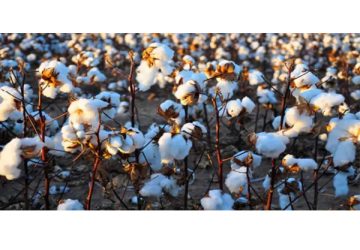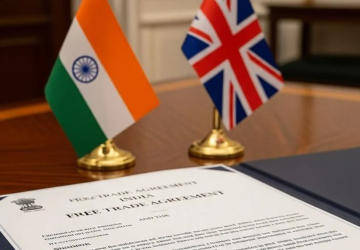India has opportunities over China and Bangladesh arising from the US reciprocal tariffs. These tariffs have been paused for 90 days now. But the 27 percent and 37 percent tariffs on India and Bangladesh respectively though significant may not cause “broader economic instability”. This is how experts, economists” and senior industry leaders perceive the situation. They say India has the potential to expand in the apparel and textile sectors in the US the world’s largest consumer market.
Further, India can capitalise on the reciprocal tariffs on Chinese goods by positioning itself as a “reliable, alternative supplier, especially in sectors like textiles, pharmaceuticals and electronics. While India’s exports to GDP ratio remains relatively lower, there are opportunities in targeted. Sector – specific gains by aligning industry’s capabilities with global demand and diversifying supply chains. India can transform this trade shift into “long term driver of exported economic growth”.
Again a 5-10 percent market shift in India’s favour across yarns, fabrics and linens could yield dollar 1-2 bn with global supply chains flow. This is a “defining moment and India must act now and lead the next decade”.
These experts note that China’s exports are valued at dollar 20 bn in apparel and at dollar 1.95 bn in bath and bed linen, India’s share in this is just dollar 3.8 bn and 1.95 bn respectively. Despite US tariffs on Indian products being lower MFN 5.8 percent plus / reciprocal tariffs (10 percent) compared to China’s 24.5 percent, India has yet to fully capitalise on this advantage, experts further say.
The reciprocal tariffs on textiles and made-ups are expected to have significant consequences for key export nations like India, China, Vietnam and Bangladesh. These countries collectively supply a substantial portion of the US market, leveraging cost effective production, skilled labour and established supply chains.
India which exports a diverse range of textiles and home furnishings to the US, particularly segments like cotton, apparel and textiles, higher tariffs could reduce price competitiveness. China already facing tariffs from the US – China trade war sees a further decline in its textile exports, accelerating the shift of manufacturing to the Asian Countries.
Bangladesh and Vietnam known for their strong apparel manufacturing bases could also face challenges if tariff rates make their exports less attractive compared to suppliers from regions like Central America which benefits from trade agreements such as CAFTA – DR. Thailand which has a smaller growing textile exports market with potential disruptions in its synthetic fibre and sportswear segment.
Industry leaders urge Central Government authorities to ban the duty free entry of Bangladesh garments into India under the South Asian Free Trade Association (SAFTA). Bangladesh has banned yarns through land route. It has withdrawn permission to import yarn through land ports along the India – Bangladesh border effective immediately.
India, the main yarn supplier to Bangladesh, has been “heavily impacted” by this ban as these ports were key entry points. Bangladesh has been a major market for Indian yarn, with most shipments previously routed through those land ports for quick and effective delivery.
The ban will “disrupt” this trade flow leading to potential revenue losses for Indian yarn producers, especially those based in Eastern India. Many had set up warehouses in Kolkata to streamline exports. With Bangladesh now expected to turn to suppliers like China, Indian exporters face increased competition and logistic challengers as sea routes are more expensive and time consuming.
Experts warn that Bangladesh’s reliance on cotton yarn and fabrics from China carries “significant risks” due to origin tracing regulations enforced by the US and European Union under the UYGHUR Forced Labour Prevention Act (UFLPA). Consequently the continued use of cotton yarn and cotton knitted or spun fabrics sourced from China could result in serious trade and reputational consequences for Bangladesh. These knitted businesses of Bangladesh may shift to India. India should take quid proquo action against Bangladesh by banning the duly free entry of garments.
Vietnam stands out as the most exposed with exports to the US accounting for a significant 25.19 percent of its GDP. The imposition of a 46 percent tariff could therefore have a “profound impact” on Vietnam’s export driven economy, potentially affecting employment, manufacture and foreign investment in its textile and apparel sector.
Thailand also shows notable dependence with exports to the US, forming 10.39 percent of its GDP. A 37 percent tariff could lead to price pressure on Thai products, reducing competitiveness and possibly forcing a realignment of export markets or re negotiation of trade terms.
In contrast India’s (2.22 percent) lower reliance on the US, China (2.33 percent) and Bangladesh (1.85 percent) exhibit lower exports to GDP ratios, indicating a relatively lower reliance on the US within their broader economies. However, the extraordinary 245 percent proposed tariff on China could still severely disrupt trade flows given the volume of exports involved. For India and Bangladesh the 27 percent and 37 percent tariffs respectively could still be significant for sector specific industries like textiles but may not cause broader economic instability.

















